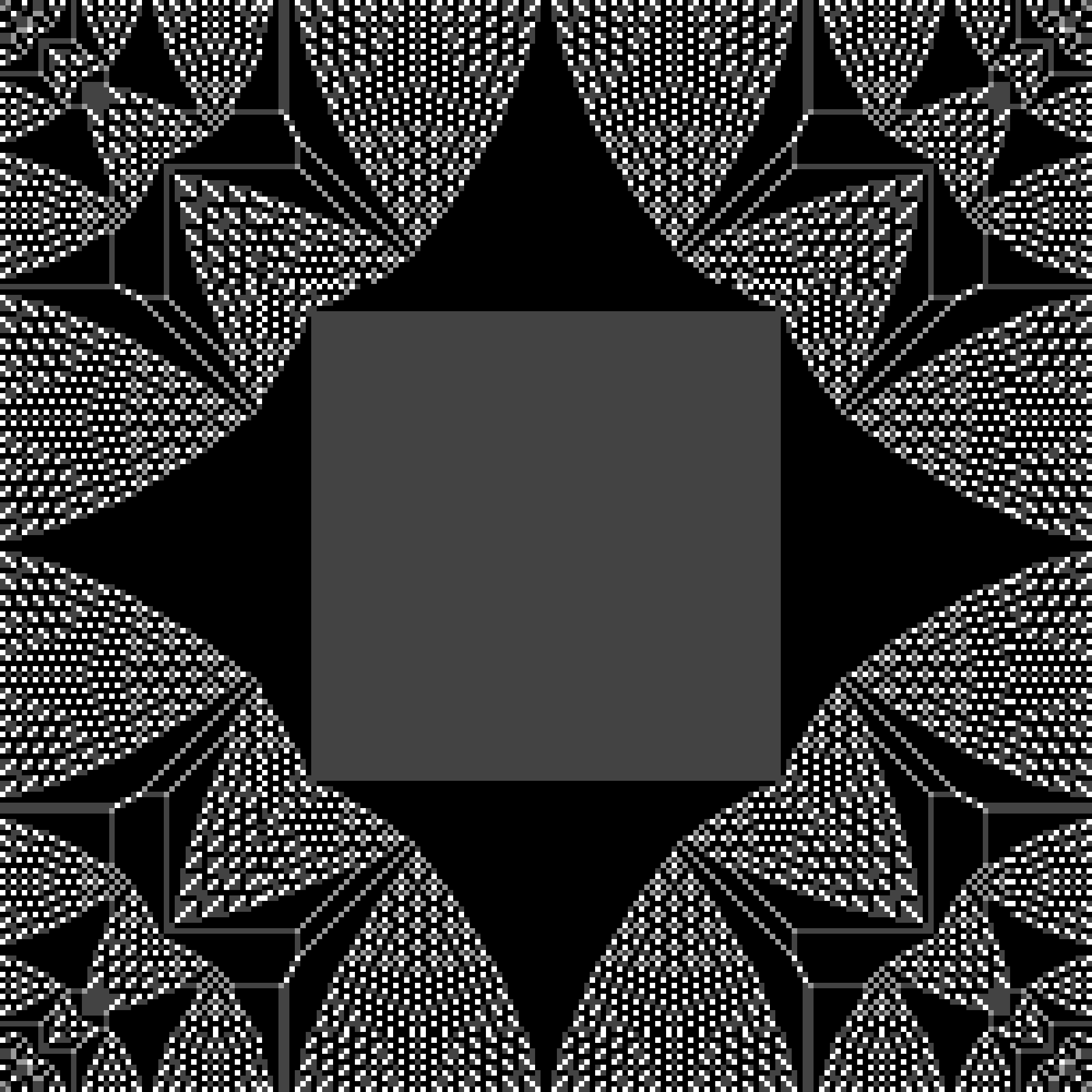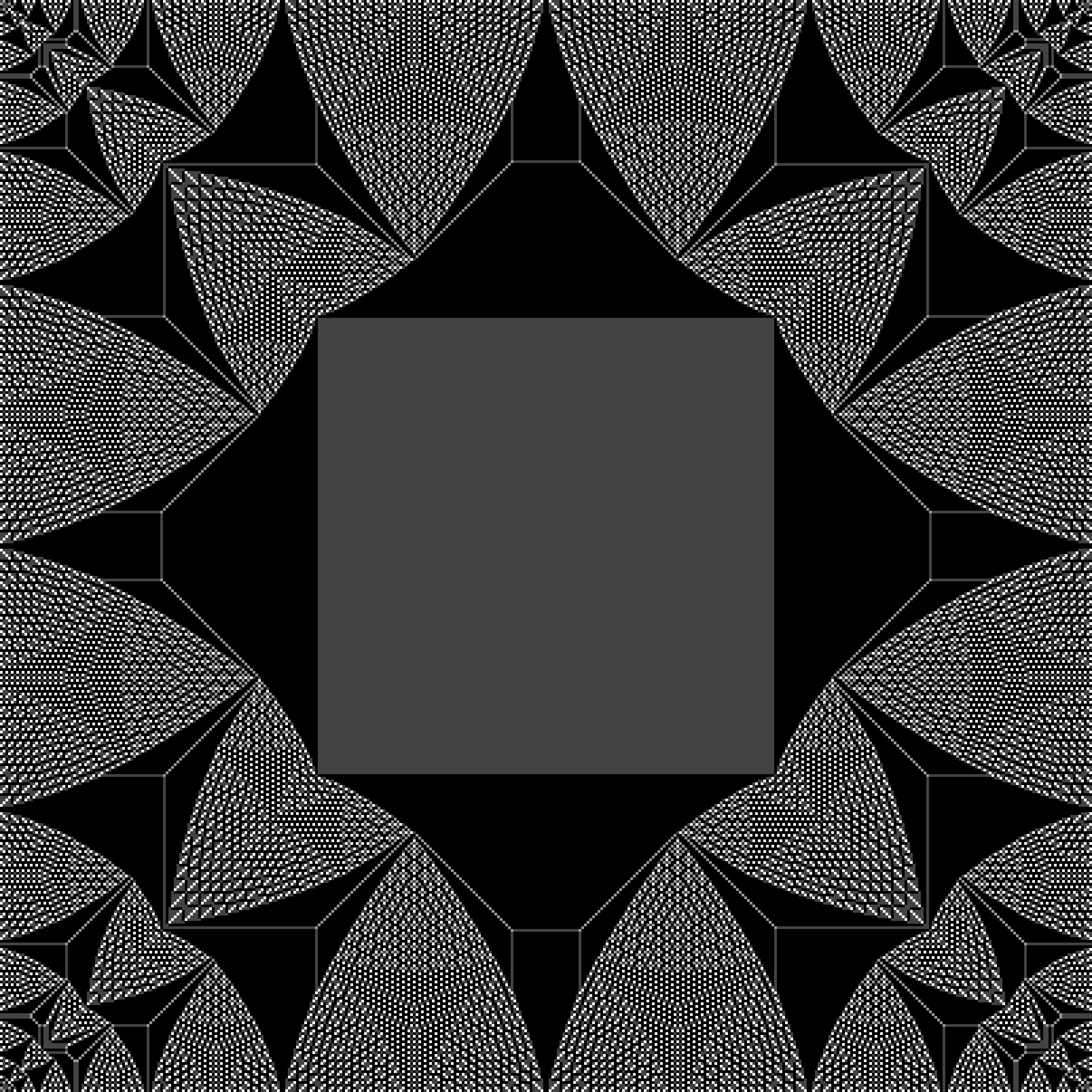Imagine a flat table, on which you add sand grains one by one. After some time a heap has formed, and after some more time it reaches the borders of the table. At this point the sandpile enters a meta-stable state in which, on average, as many grains leave the table as are added.
A configuration is an assignment of a number of sand grains into the cells of a two-dimensional grid of finite size. The evolution rule is elementary: if a cell contains 4 grains or more, it gives one grain to its four neighbors (north, east, south, west). The rule is applied in parallel, and grains falling off the border are lost, until a stable configuration is reached.
As you add grains one by one into the system at random sites, some stable configurations cannot appear after some time (for example the all zero configuration), while others can appear infinitely often. This latter is the set of recurrent configurations. Given the action that adds cell by cell the content of two configurations and then applies the rule until a stable state is reached, we have an abelian group! In particular, there is an identity element, that is, an element such that adding it to any recurrent configuration and stabilizing leads back to the recurrent configuration. Identity elements have a fascinating structure and beautiful scale invariances, but very few properties received mathematical explanations...

Identity element on a grid of size 200 by 200. Color code goes from 0-white to 3-black.

Identity element on a grid of size 400 by 400. Color code goes from 0-white to 3-black.